Geocaching
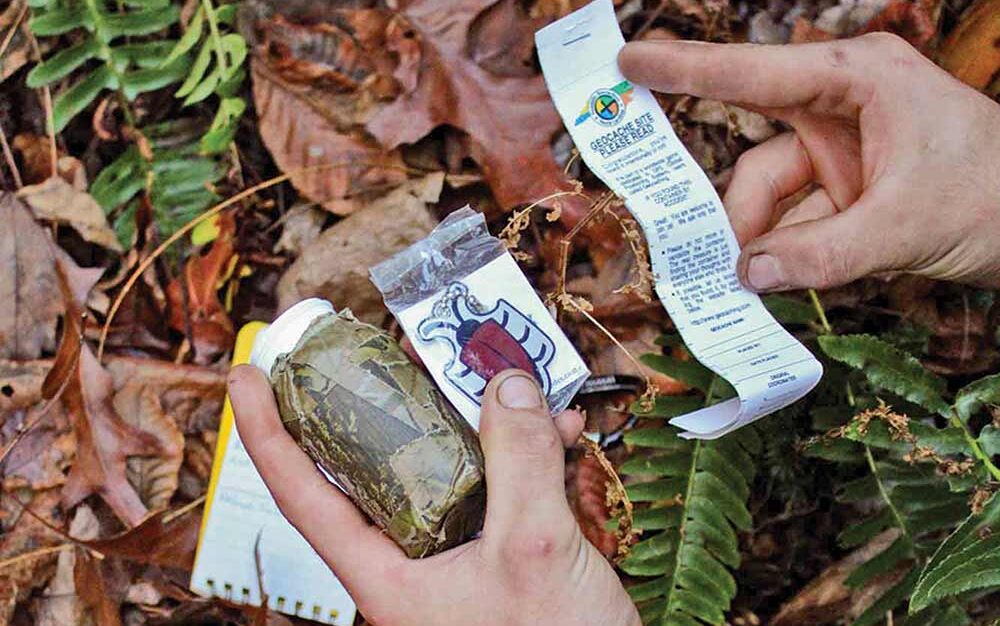
Treasure Hunts with Tough Terrain
A Magnifying glass, multi-bit screwdriver, water gun, two keychain lights, super glue, socks, and a toy butterfly sit inside a small green ammo box nestled among the Pisgah National Forest. Hikers walk by daily without notice. Now and then, a passerby will bushwhack off the beaten path to find the box, taking one item out and replacing it with another. What are these treasure hunters doing? Geocaching.
Whether you’re deep into an off-road expedition or stopping for a picnic on a scenic drive, most popular outdoor spaces and backcountries are likely home to a couple of secret stashes just waiting for someone to solve their mystery. What makes these low-grade trades worth tracking down? “It’s just an excuse to get outside hiking,” said John Sanders of Old Fort, North Carolina. He began his geocaching journey in the fall of 2001 after a good friend invited him to join in. “He told me about it and then, boom!” They hid their first cache together soon after, “Spyder’s Cache,” which is now one of the oldest in the state.
Whether you’re deep into an off-road expedition or stopping for a picnic on a scenic drive, most popular outdoor spaces and backcountries are likely home to a couple of secret stashes just waiting for someone to solve their mystery.
Cachers can find treasure anywhere from mountain peaks to parking lots. While some require crossing treacherous terrains, others are roadside, making this hobby accessible for all ages and abilities. “Some of them are tougher than others, some of them you basically jump out and there you see it,” said Sanders.
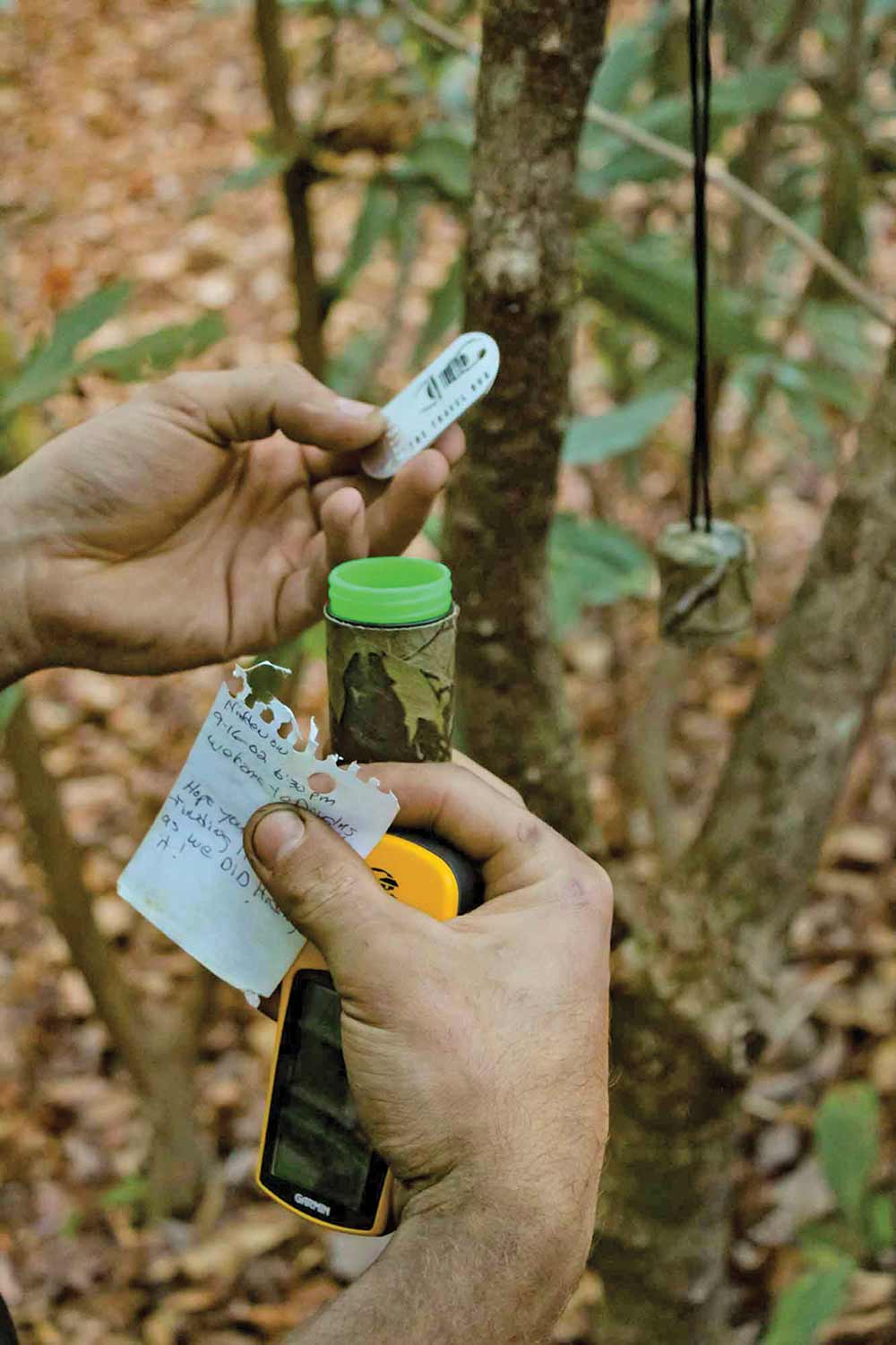
A geocacher opens a camo-cover cache hanging from a tree limb. Inside is a trackable dog tag and a note from the owner.
Let the Games Begin
Getting started with geocaching is as simple as downloading the app or visiting the website. Using the map or searching the nearby area, users can select caches based on level of difficulty, terrain, and size. Using the cache’s coordinates, a GPS device, or the app will take users right up to it, but it’s not always that easy. Each cache contains a description and typically a hint worth decoding once in the right spot. A clever eye and maybe some rock or log moving will lead to a box full of dollar store-style goodies or a camo-wrapped pill bottle, either most definitely containing a log sheet full of names and dates.
Getting started with geocaching is as simple as downloading the app or visiting the website. Using the map or searching the nearby area, users can select caches based on level of difficulty, terrain, and size.
The thrill of the hunt doesn’t stop at the coordinates. After finding or not finding a cache, players can go online to share messages about their journey and post photos—no spoilers though. “Would never have known this place existed had it not been for these caches…Got the old cache wagon parked and headed up the trail…Neat hide for sure…” wrote one player on a cache of Sanders’. “Gave this one a good try, but no luck…” wrote another. Some use the log as a helping hand to future finders, one person wrote “GPS will only get you in the area, read the description and follow your geosenses.”
The geocaching community is diverse and widespread. With over 361,000 geocache owners, you can find caches on all seven continents. In 2001, Sanders was driving across state lines to find caches and now finds them “plastered all over the place.”
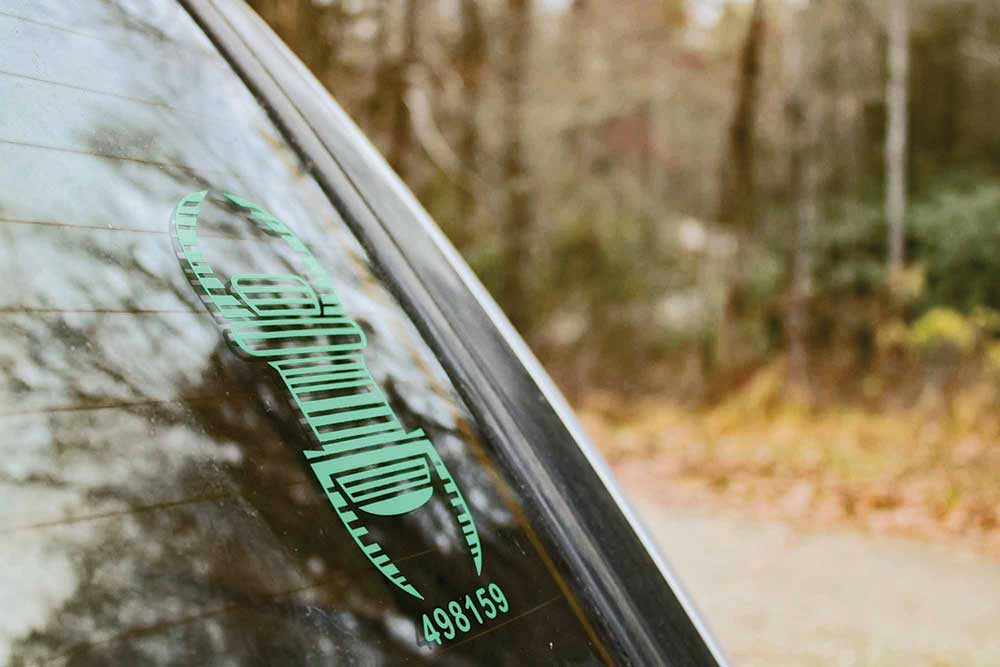
A decal of a trackable travel bug sticks on the back windshield of this van rig. Other cachers can log its location when spotted.
Comprehending Caches
There are many types of caches that offer different ways to play. Traditional caches are simply containers anyone can find at given coordinates. Getting more complex, multi-caches consist of at least two locations with the first handing you a clue for finding the next. Mystery or puzzle caches provide an extra challenge, which could be to decode coordinates or solve hefty riddles. There are some caches that, in order to log, you must first find the answer to questions, like educational EarthCaches that bring attention to geological processes.
Special tags or tokens help intensify the game, like trackables. Trackables are assigned a travel goal by their owners and depend on fellow cachers to move them around. Sanders owns roughly six trackables with their highest mileage at about 14,000 miles traveled. Overlanders have been known to stick the code or decal of a trackable to their rigs for others to log when spotted. This fun way to geocache, or jeepocache, is a creative way to see where your rigs traveled and spark conversation with other cachers.
Overlanders have been known to stick the code or decal of a trackable to their rigs for others to log when spotted.
One of Sanders’ most memorable cache adventures was a multi-cache appropriately titled ‘Tube Torture.’ Sanders and his friend, Spyder, traversed underground pipes, taking them beneath a local mall and eventually under the Blue Ridge Parkway. “It was the thrill of the chase but we enjoyed just getting out and hiking too,” said Sanders. They were the second cachers to find the first cache in the three-part series—an achievement worth bragging about in the cache community.
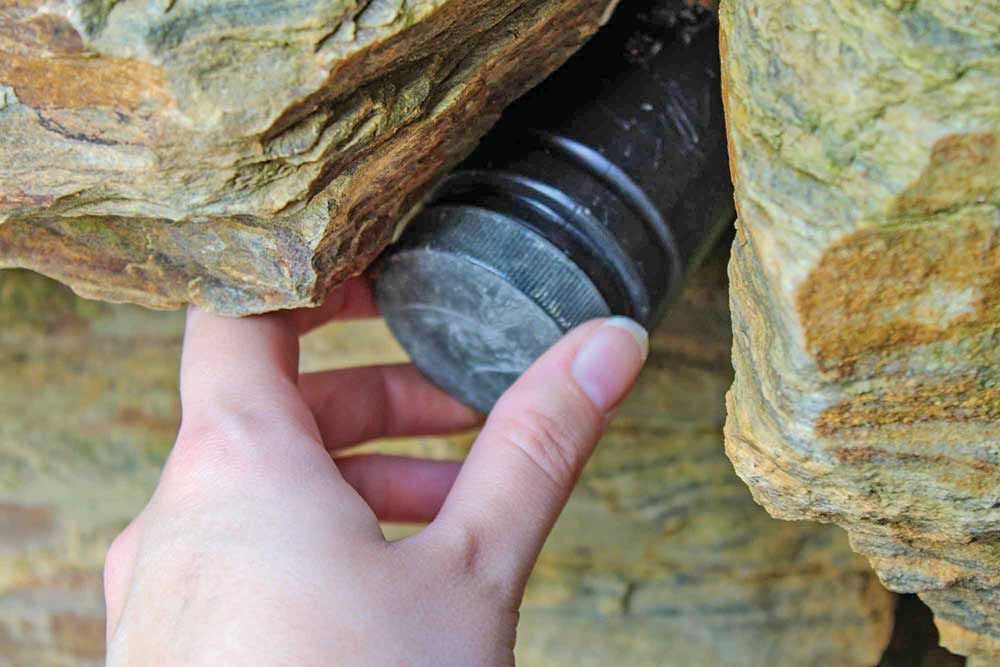
Geocaches are hidden in clever spots, often matching their surroundings. This canister hides in the shadows of a rock pile.
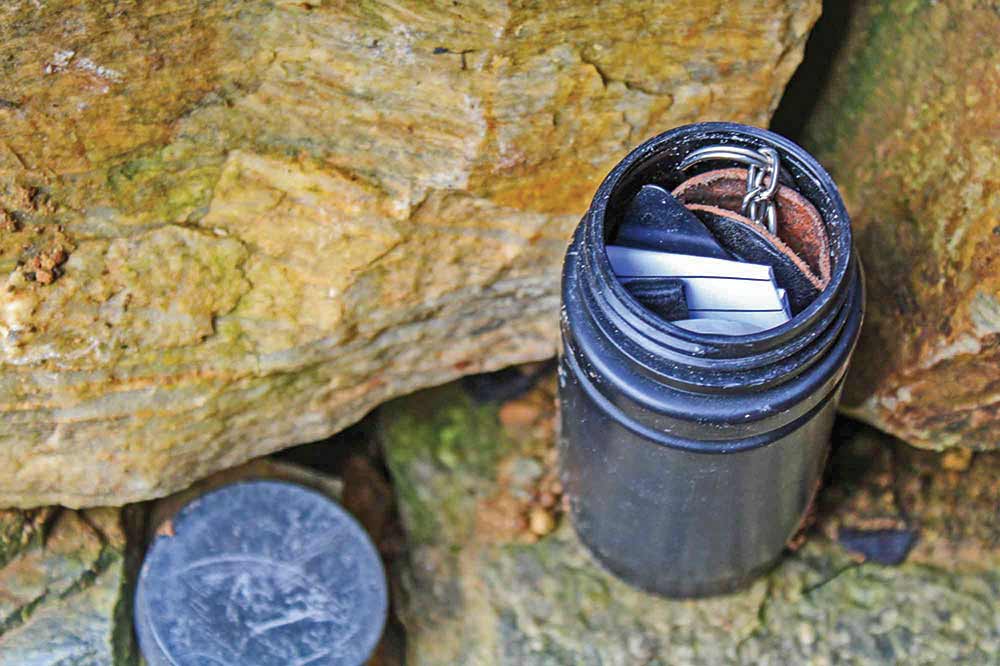
Lots of little treasures can fit inside even the smaller geocaches, but as long as they fit a logbook, they’re good to hide.
Advice from Geocachers
“You’ve got to enjoy both aspects, the hiking and solving the puzzles,” said Sanders about the geocaching community. Sanders is one of less than 400 geocachers in the world that has been a premium user since the site first started, a site where he built many friendships by chatting it up in the forums and meeting others at official events.
A log sheet of names and dates was crammed inside a tube with other fun cache contents.
In the early days of the hobby, GPS devices were the sole source for cachers to follow coordinates. Now, the geocaching app will point you right where you need to be. While some may argue this takes away from the challenge, others point out the increased accessibility. Sanders utilizes both means of navigation. When he finds himself yearning for a cache but without his GPS unit, he pulls it up on his phone. Though he opts for the old-school way to avoid frantic scrolling, “We’d print them out on a piece of paper, fold them up, stick them in our back pocket, and here we’d go,” said Sanders.
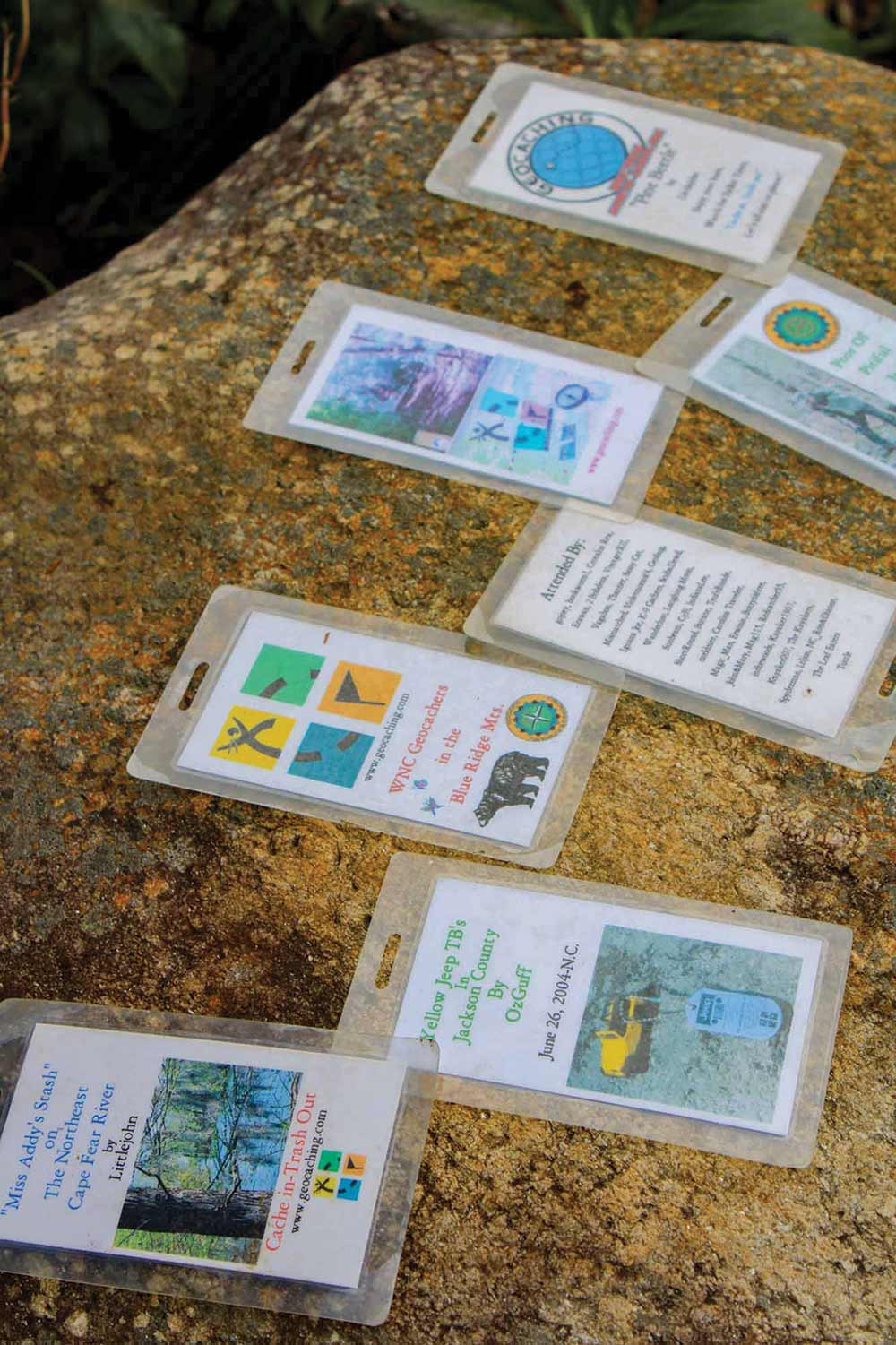
Attending an official geocaching event or regional meet-up can send cachers home with goodies, such as these cards confirming finds.
Geocaching for Overlanders
Geocaching is a special way to practice navigation skills. From creating waypoints and plotting routes to researching trails and reading maps, the talents of a master geocacher are practical for any off-road navigation. One of those talents? The knack for stumbling across hidden gems like abandoned buildings or secluded waterfalls.
From hundreds to over a thousand geocaches located along popular overlanding and off-roading sites like Moab, Mojave, or Sedona—caching waits to add a new dimension to any excursion. With a simple app download or some pre-planned printing, a hard look will lead to low-price prizes and a true sense of accomplishment. Maybe with some luck, a plastic butterfly or a mini-screwdriver could be in your hands next.
From hundreds to over a thousand geocaches located along popular overlanding and off-roading sites like Moab, Mojave, or Sedona—caching waits to add a new dimension to any excursion.
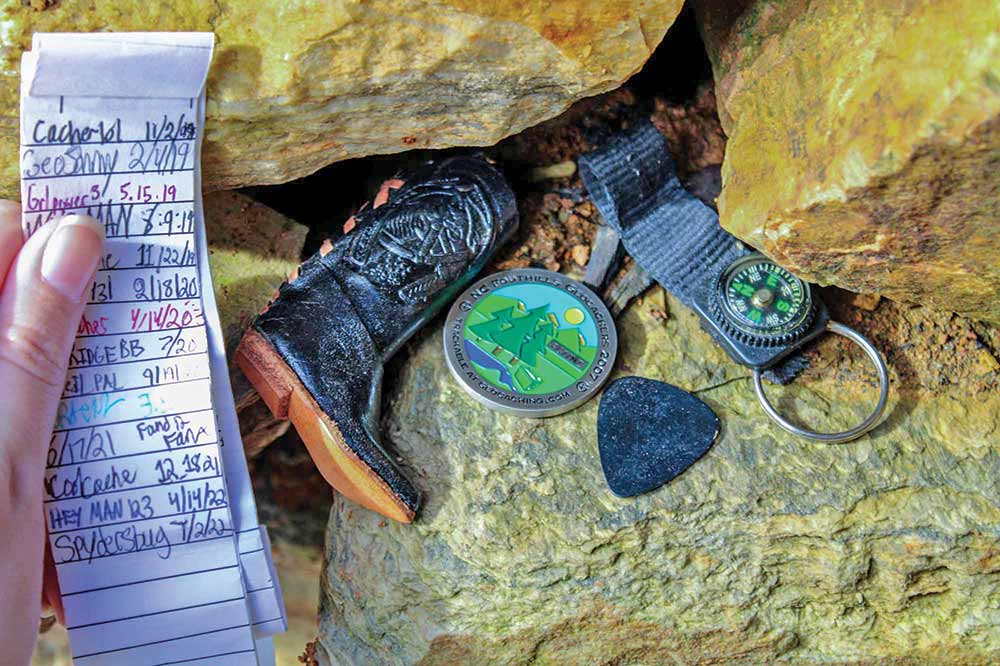
A log sheet of names and dates was crammed inside a tube with other fun cache contents.
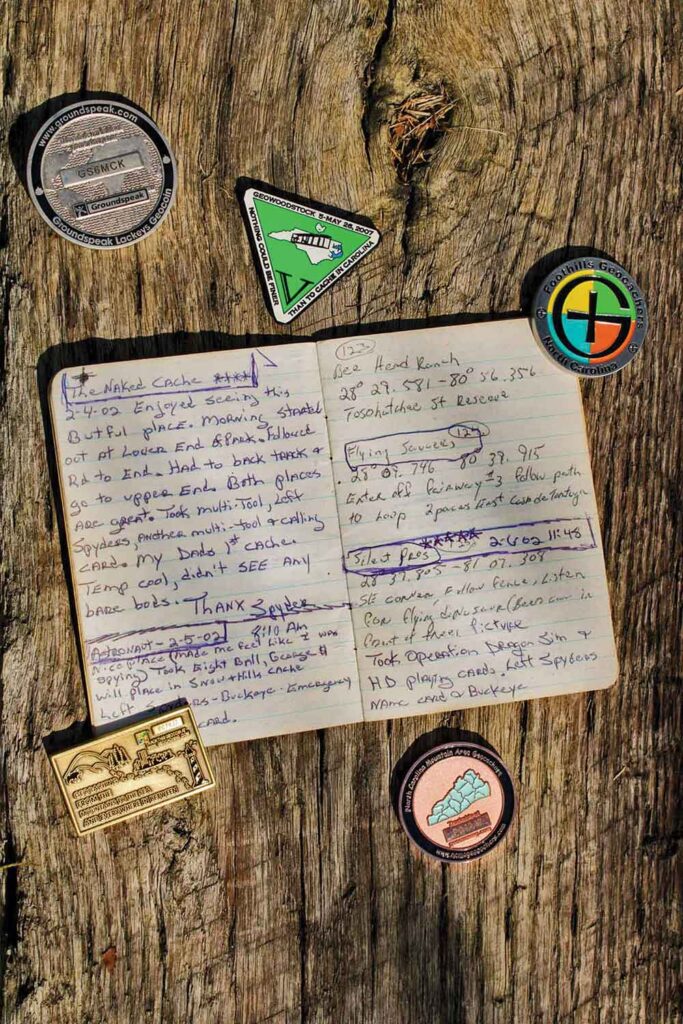
Many geocachers keep a notebook to write down clues and coordinates before the hunt. After a find, they can jot down their thoughts before getting to the online log.
Editor’s Note: A version of this story previously appeared in the TREAD Jan/Feb 2023 issue.



